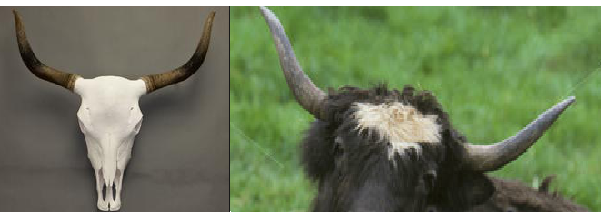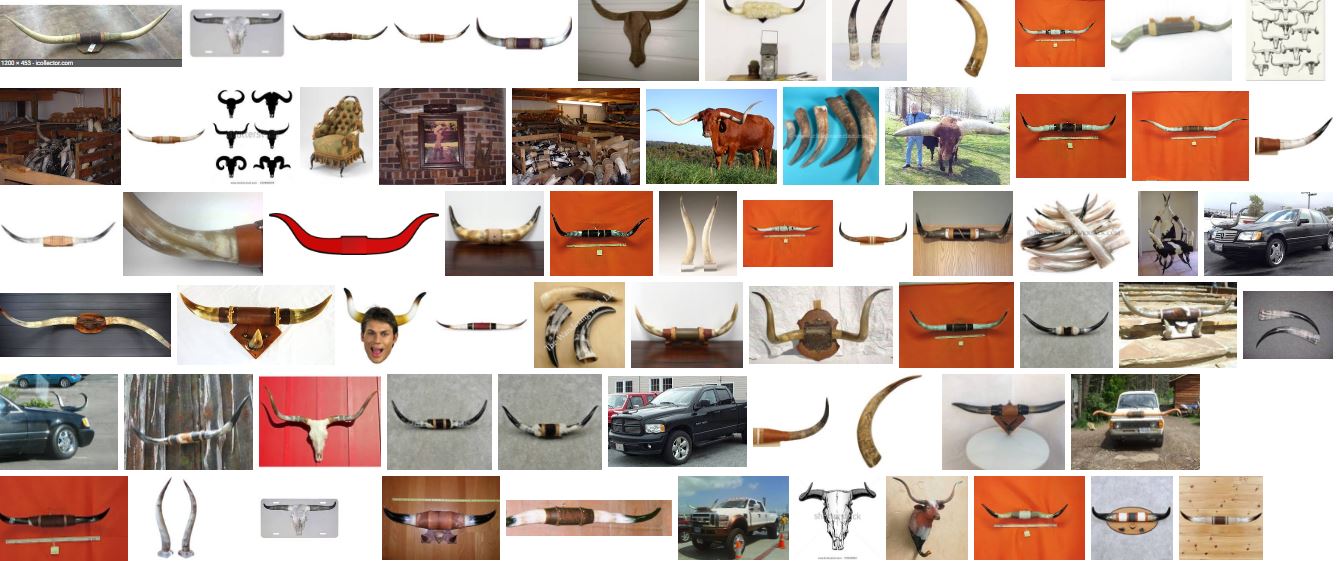A single picture of aged and polished horns is not going to be that easy to give a confidently correct answer, but I can at least say that they appear to me to be horns of a yak or cattle steer.
See for example, the horns of a female domesticated yak (Bos grunniens):

the horns sweep out from the sides of the head, and then curve forward; they typically range from 48 to 99 cm (19 to 39 in) in length. The horns of females are smaller, only 27 to 64 cm (11 to 25 in) in length, and have a more upright shape.
Wild Yak (Bos mutus) have similar, though smaller and sometimes curvier horns:
The Wild Yak’s horns are grey to black and curve outwards, forwards, back, and slightly inward. The horns of males are larger than those of females. The horns of male Wild yaks average 42.6 centimetres (16.8 inches) in length, from tip-to-tip, and 35.2 centimetres (13.9 inches) in circumference. The horns of females average 32.2 centimetres (12.7 inches) from tip-to-tip and 19.5 centimetres (7.68 inches) in circumference. [Source].

Yak (Bos mutus) in the Lüneburg Heath wildlife park, Germany. [Source].
Both Yak species are present in Asia:
Though there are over 12 million domestic yaks in the Central Asian highlands, fewer than 10,000 Wild yaks survive.
However, as I said, these could just as likely be the horns of any of a number of variety of steer cattle. (There are over 800 varieties!).
See for example, this Corriente cow in California:

If you Google "steer horns" you get dozens of shapes and varieties of mounted horns. You could comb through looking for similar specimens...

If I had to guess, since your grandparents are from Russia where yak are present, it seems to me it would be more interesting/impressive to mount yak horns vs just steer cattle horns. But that's just a personal guess.
Here's a picture showing a variety of species and their horns:







